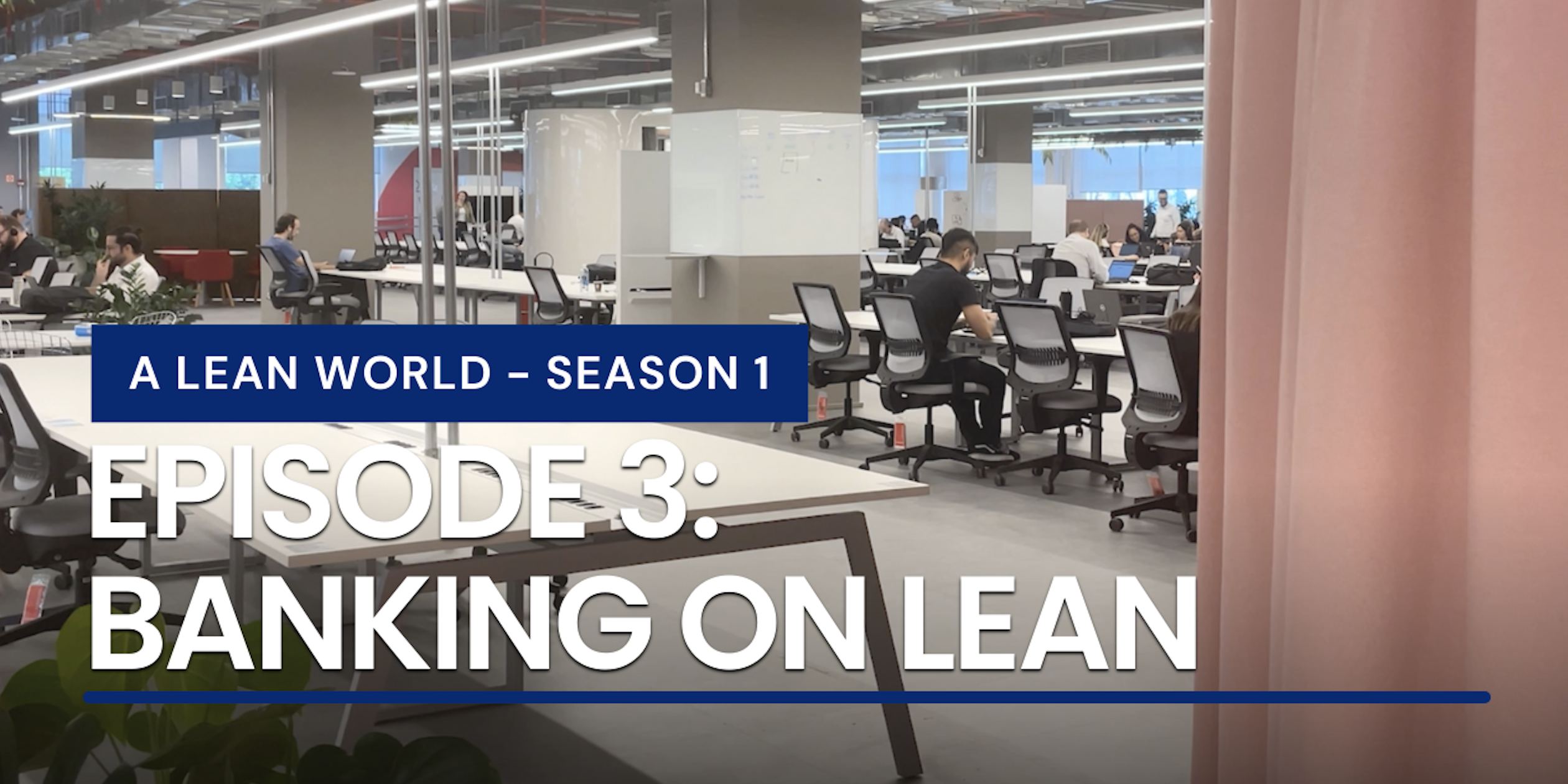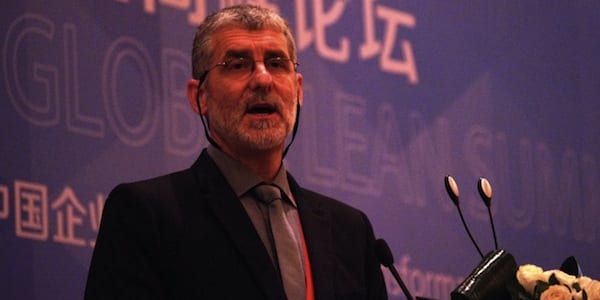
Lean management to make the Paris Agreement on climate work
WOMACK'S YOKOTEN – Last month nations signed a greenhouse gas emissions deal – on paper, an insurance policy against climate change. But if action is to follow promises, the cost of the insurance premium, as perceived by voters and governments, must be lowered. Lean thinking can help.
Words: Jim Womack, Founder and Senior Advisor, Lean Enterprise Institute
I've just been reading the details of the global Climate Protocol agreed by 195 nations in Paris on December 11. Let's see. Nations north and south have promised to either reduce their current greenhouse gas emissions (north, developed) or slow their rate of increase (south, developing). They have agreed, upon ratification of the deal by 55 nations accounting for 55 percent of global emissions, to set targets to hold the rise in average global temperature to "well below" 2 degrees Celsius above pre-industrial levels – the aim is 1.5. And they have agreed to measure their emissions in a transparent way. But wait. There is no independent verification of emissions and there is no penalty for failing to achieve national objectives. So what we have here is a tiny start, despite the ballyhoo, toward a daunting objective.
Meanwhile this past week the global average temperature for 2015 was reported at the highest level recorded in 136 years of record keeping. This was a big jump over 2014, to 1.62 degrees Celsius above the pre-industrial average temperature. That doesn't leave much wiggle room for meeting the Paris Agreement's 2-degree goal. Wow.
In a situation where the future cannot be predicted precisely but there is some possibility that something bad might happen, people normally buy insurance. The standard example: Your life might suddenly end without enough assets on hand to support your family, so you buy life insurance. It's a relatively small expenditure for protection from a big bad. But in the case of climate, where the big bad might be truly big and truly bad (but with uncertain likelihood because climate models – like any models – can only be verified by running experiments, in this case with the global climate) the world has shown great reluctance to buy much insurance. After the experiment has been run, of course, we will know the actual likelihood of the big bad but by then it will be too late to do anything if a tipping point has been passed. The latter possibility is the big, big bad.
The reason for this behavior is that even in the most alarmist forecasts the bad is many years away but the insurance premiums must be paid starting right now. Imagine how much life insurance would be sold if the only policy available was for one's entire life with the entire premium payable immediately. Yet in the climate case, governments believe they will need to ask voters to pay large amounts now for benefits to be gained for generations to come.
So governments talked about bold initiatives in Paris to minimize the risk of the big bad, but made promises they can easily take back. This approach makes a lot of people feel better because of the bold statement of intent without having to spend much money now or accept restrictions on freedom of choice. Sum-up: No one has actually agreed to buy an expensive greenhouse insurance policy.
So what's the lean angle here? My view is that the big barrier to buying insurance is the perceived cost of the premium. To take the example of motor vehicles, we have the technology right now to make passenger cars that get 65 or more miles per US gallon. (I've got one, partly fueled by the solar array on my home.) And we are rapidly developing the technology to create solar and wind powered vehicles that are largely greenhouse gas free. (But remember that their energy source must reduce or eliminate greenhouse emissions as well – Teslas pushed along by electrons from coal-fired power plants may actually increase greenhouse emissions! So Tesla without Solar City (its partner firm putting solar cells on buildings) is a bit of a nonsense.
However, because there is currently a big cost and price premium for low emission vehicles only greenhouse zealots will buy them of their own volition, particularly at this point in time with plummeting prices for carbon fuels. Thus the American government's bold 54.5 mile per gallon CAFE goal for 2025 (which forces voters and motorists to pay the premium soon) is up for review in 2016 and I'm imagining that it will slide steadily to the right.
Note that I said "perceived" cost is the big barrier to buying insurance. I say this because most folks – including those within the conventional motor vehicle industry – look at the cost of low-emission mobility provided by vehicles designed and produced with mass production and management and used in conventional ways. They perceive the insurance cost to be very large.
The lean way to think about this is first to determine a target cost for low-emission or zero-emission technology vehicles used in alternative ways, a cost that will seem acceptable to users (voters too) or sustainable by governments offering tax incentives for their use. The cost would include capital costs plus operating cost per mile. Then calculate the cost of conventional vehicles used in conventional ways and determine the performance gap. Then take a hard look at how the gap can be closed through better designs (from lean product and process development) with better, leaner manufacturing processes and by smarter, leaner use of vehicles.
This will surely sound silly to many readers. But there is already an example. When Toyota discovered in the mid-2000s that its hybrid technology was a runaway success it also discovered a major problem: Although the Prius was great for Toyota's image it was a big money loser. The vehicle and its hybrid technology cost more than customers were willing to pay. So Toyota was garnering rising sales and a halo effect for the rest of its products through subsidies from its other vehicle lines, an unsustainable path if all vehicles were converted to hybrid technology.
To countermeasure this problem Toyota set out over a three-year period to take 30% of the cost out of the Prius. (This was one of its corporate hoshin objectives.) In the automotive world this is an enormous fraction. And they largely succeeded. The Prius became a powerful image of Toyota technology and a margin contributor rather than a profit drain. What's more, this target setting process hasn't stopped. The new generation Prius just launched takes cost reduction further by using a derivative of the body designed for the Corolla to minimize design costs and maximize scale economies. (I fear that this design will also seem timid and boring so that Toyota loses share in the hybrid market, but that's another matter.)
So far we are looking only at vehicle technology, design, and manufacture. But many experiments are now underway with shared use of vehicles (Turo, Car2Go, ZipCar, etc.) which can mean many fewer vehicles in the fleet but driven many more miles per vehicle because they are shared with many users. The capital cost per mile to add low-emission technologies to these vehicles falls dramatically as the cost of the additional technology is spread over many more miles per year. Thus the greenhouse premium can be much lower than perceived.
By setting a target, determining the gap, and deploying the full compliment of lean methods it should be possible to make steady progress toward reducing the cost of greenhouse insurance in every industry. I'll call this lean insurance and hope that members of the Lean Community will take the lead in pushing this concept ahead.
THE AUTHOR

Management expert James P. Womack, is the founder and senior advisor to the Lean Enterprise Institute. The intellectual basis for the Cambridge, MA-based Institute is described in a series of books and articles co-authored by Jim himself and Daniel Jones over the past 25 years. During the period 1975-1991, he was a full-time research scientist at MIT directing a series of comparative studies of world manufacturing practices. As research director of MIT’s International Motor Vehicle Program, Jim led the research team that coined the term “lean production” to describe Toyota’s business system. He served as LEI’s chairman and CEO from 1997 until 2010 when he was succeeded by John Shook.
Read more


WEB SERIES – Episode 3 of our docuseries on lean in Brazil takes us to the second largest bank in the country. Learn how Bradesco is striving to improve its processes to provide more value to its customers using Lean Thinking.



COLUMN – Last month a video surfaced of a passenger being forcibly removed from an overbooked United Airlines flight and the Internet went ablaze. What does this story tell us about the relationship between profitability and customer value?


NEWS - Back from his annual trip to Shanghai, Anton Grütter, CEO of the Lean Institute Africa, shares a few interesting insights into the Chinese culture.


INTERVIEW – With more and more organizations in the service sector adopting lean thinking to turn around their modus operandi, it only makes sense to highlight the struggles and misconceptions they still encounter.

